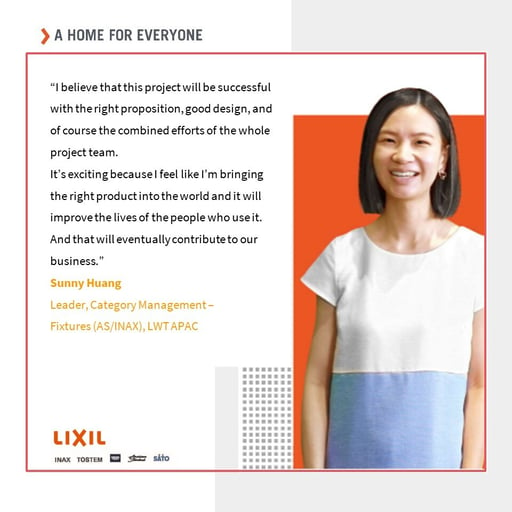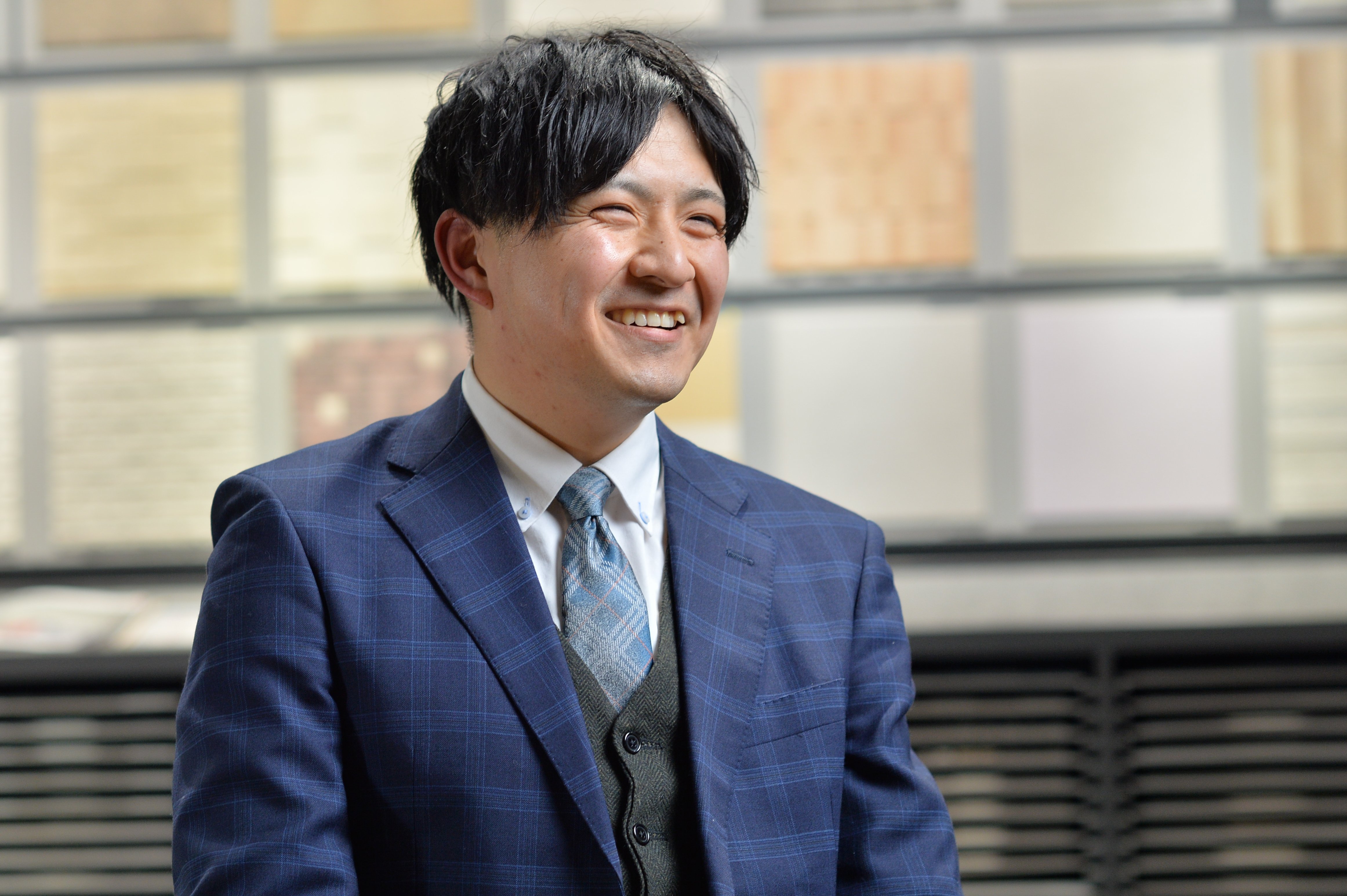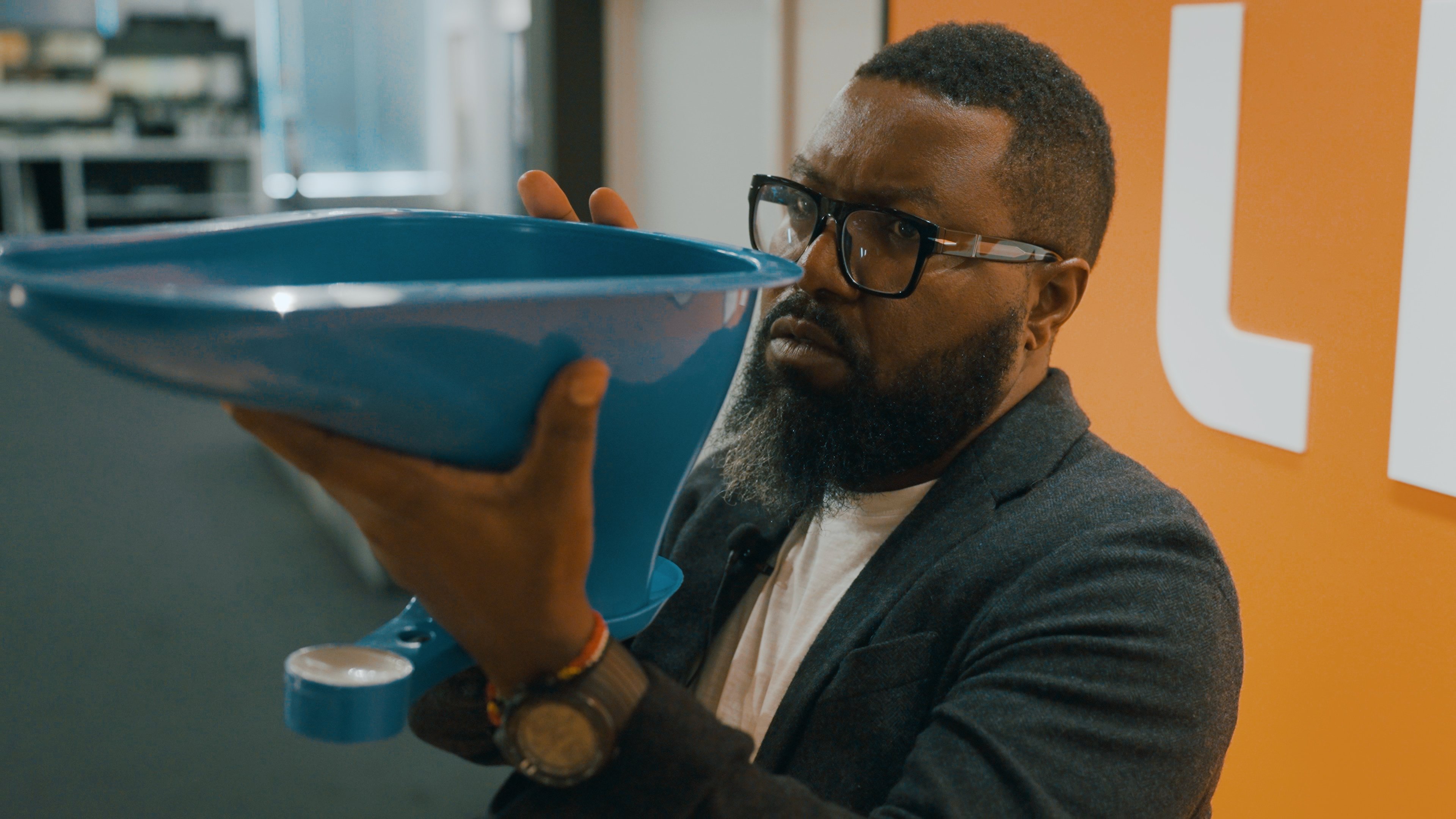Meet Sunny and be inspired by her career journey

Sunny Huang
Leader, Category Management – Fixtures (AS/INAX), LWT APAC
Let’s start at the beginning. How did you arrive at LIXIL?
It started with my decision to study Japanese, Urban Design, and Architecture in Japan. I like that Urban Planning is not just about creating new or fancy places. It’s about what an area will be like to live in or go to, how people would engage with each other, and engage with the things around them. Will it help to build better communities and create better experience for people?
My professor at the time inspired me enormously. Some of the projects he led won multiple awards, and he has a truly global mindset. When embarking on a project for commercial facilities, instead of starting with shaping the building itself, we would research the area’s history, people and communities, think through how the people would be using the space, and then only design the space.
As an international graduate from China, I was looking for global opportunities related to either architecture, or housing equipment and building materials that would let me use my Chinese background, Japanese education, and English language skills. I was searching around and noticed LIXIL. I joined in 2014.
Describe your experience at LIXIL as a graduate
 I started out as an engineer in product development. It was quite an adjustment. I was the youngest – in my 20s. Most colleagues around me were in their 40s. The older Japanese colleagues were very kind and knowledgeable in their fields. They taught me a lot: technical approaches, key quality standards and how to evaluate a product properly. We worked with respect all the time despite the differences in age and experience.
I started out as an engineer in product development. It was quite an adjustment. I was the youngest – in my 20s. Most colleagues around me were in their 40s. The older Japanese colleagues were very kind and knowledgeable in their fields. They taught me a lot: technical approaches, key quality standards and how to evaluate a product properly. We worked with respect all the time despite the differences in age and experience.
Before I became a product engineer, I thought the focus was just on the functional design with CAD drawings. I never knew there was so much detailed work focusing on quality. To simply change one small component, we test everything. Then we think again about other potential risks that we design new protocols to test for. We’re doing everything we can to deliver the highest quality product possible. Experiencing this gave me huge confidence in the quality of LIXIL products.
After a while, I was considering other options and switched to a Product Manager role with the then-new Product Planning and Development (NPD) team.
What was the new role like?
It was a great fit for me. But it was really tough at first, with a lot of pressure. You need a deep understanding of the market and product category. And you need to communicate and understand the point of view of different functions. Different people working together with different KPIs and different thinking to accommodate. You need to bridge the gaps, unite the team, focus on the customer, and bring the product into the world — from scratch.
What does that process look like?
Before launching, products go through the Stage-Gate process. Itʼs a multi-year journey, with four Gates to pass. You canʼt do it alone. Teamwork is essential.
As a product manager, you need to oversee and lead the teams through the whole process. But the key is to be ready from the beginning. This is where you define the product value proposition and initially align with different stakeholders like R&D, design, finance, and sales in different markets.
Throughout all of this, you need to coordinate with the project team and communicate with people with different backgrounds, mindsets, points of view, and priorities. With more stakeholders along the way, there is more feedback, more issues. You have to learn, and deal with them all. One by one. And although you are the product manager, the
cross functional project team members are not reporting to you, so you have to work hard to earn their trust.

How do you navigate that process?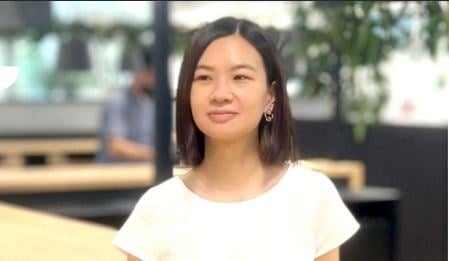
Step by step. With a lot of time and effort. First, be confident so you can rally people. Create a brief with strong messages and effective visuals. Involve your colleagues from the start so they understand why we need this product, with detailed performance and competitive analysis and a crystal-clear value proposition. Everything you need to build the whole story. So when people hear it, they feel like, "Okay, you already succeeded with the story." The last thing is execution.
But even then there are a lot of questions. People might say "No, we cannot do it” or “We have other priorities”. You need to stick to your idea or find another way around. Not every idea becomes a project. And not every project makes it to the last stage. You need to be patient and persistent about what you have built. But flexible at the same time. You have to develop both the big picture thinking and the fine details to understand all different perspectives.
Is there a moment where you realize you might be beginning to convince people?
Itʼs the moment you get your first positive feedback. When someone says “This is a good idea, but we need to think deeper about it this way. You should do more analysis on this direction”. Or ”Give us some time. We will think about it and get back to you”. Once you get that, thatʼs the moment. But it doesnʼt mean that it's all done.
There is still a lot of trial and error and unexpected problems along the way. Reworking is normal. When I started the role, I was really afraid to present at gate meetings. I would be nervous to get that one question you don't have a well-prepared answer for. Or the negative feedback that rings true. It makes you feel like, "Oh, I didn't think about this
part. I need to do more about this”. But itʼs not a big deal once you get used to it. Itʼs more like “Okay,
thatʼs a good point. Iʼve learned something. Iʼll take it and experiment some more”. You learn more
from negative feedback, actually.
The feedback stops being a challenge and starts being a contribution.
Once you stop being afraid of difficult questions and negative feedback, the project gets better. At the beginning, it felt like an attack. But nothing is personal. You realize itʼs about making the project better. Itʼs not that you didʼnt do your job well. Itʼs not about pointing fingers. Itʼs about delivering value to customers. Trying new ideas and new ways of
doing things. That mindset change is the moment you really start to feel like things are moving.

What’s exciting you at the moment?
Iʼm currently working on a product that will be launching soon. I canʼt reveal too much. But itʼs targeting an interesting age group, and hopefully with the right proposition, good design, and of course the combined efforts of the whole project team, it will be successful. Itʼs exciting because I feel like Iʼm bringing the right product into the world and it will improve the lives of the people who use it. And I believe it will contribute to our business.
 Iʼve also been involved in another product called DuoSTiX Hand Shower and DuoSTiX Hygiene Spray. The series includes a hand shower, and a hygiene spray. Both deliver two optimal water sprays or either personal cleansing or cleaning the entire bathroom. One STiX serving a dual purpose.
Iʼve also been involved in another product called DuoSTiX Hand Shower and DuoSTiX Hygiene Spray. The series includes a hand shower, and a hygiene spray. Both deliver two optimal water sprays or either personal cleansing or cleaning the entire bathroom. One STiX serving a dual purpose.
When I joined the project, the product was already developed. My job was to ensure a successful launch, supporting the brand team and the product training team to communicate our products points of difference.
To translate it into consumer benefits effectively, I work closely with the country product managers. Together we manage the go-to market plan and its execution. My first task was to test the production sample and put myself in the shoes of a hygiene spray user, to accurately elaborate the FAB ̶ Feature, Advantage, Benefits. Then I try to clarify all potential questions from the markets with R&D. Lastly, I create a convincing product briefing deck to sell the stories to markets.
I truly enjoy the product marketing job. To bring a product from an idea to launch is a tremendous feeling of achievement. But itʼs a long journey. And anything but straight forward.
What does the future look like for you?
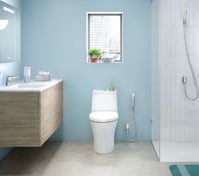
Iʼm looking forward to developing more in this role and function. Product Management is a great fit for me, definitely. Now, Iʼm focused on building up more experience across the APAC region. In the future, Iʼd like to see myself in a global role. Explore and understand the diversity needs in different markets. Bring more purposeful products to
the world. Then hopefully move into a higher position in a similar field.
As of interview in 2022
